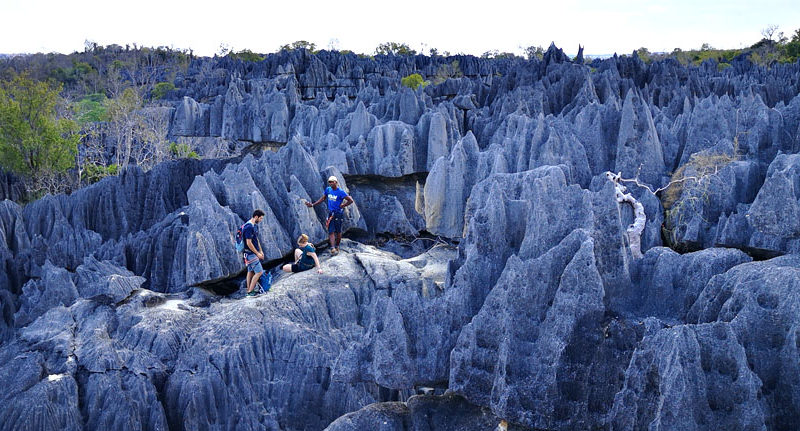Exploring the Biogeographic Zones of Madagascar: A Unique Biodiversity Hotspot
Madagascar, the world’s fourth-largest island, is a natural treasure. Its long isolation has allowed species to evolve in unique ways, making it one of the world’s top biodiversity hotspots. Understanding the biogeographic zones of Madagascar helps travelers, researchers, and conservationists appreciate the island’s unique habitats. From lush rainforests to arid spiny forests, each zone supports wildlife found nowhere else on Earth.
Eastern Madagascar Rainforests: Humid Biogeographic Zones Rich in Species
The east of Madagascar is covered by humid forests, often called rainforests. These forests are the island’s most species-rich habitats, staying green year-round. Moisture from the Indian Ocean nourishes the land, creating ideal conditions for plants and animals.
-
Lowland Rainforest Habitats: Towering trees and dense canopies shelter lemurs, frogs, and reptiles, many found only in small areas.
-
Highland Forest Zones: Trees are shorter, with open heath and grasslands above the treeline. Species diversity is lower but still important.
-
Eastern Marsh Wetlands: Rare and threatened, these wetlands support endemic birds and a variety of frogs.
Despite its richness, human activity has caused extensive deforestation. Lower-elevation forests have been replaced by secondary forests and artificial savannah. Conservation is vital to protect these ecosystems.
Western Dry Forests and Savannahs: Key Biogeographic Zones of Madagascar
The western regions of Madagascar are drier, lying in the rain shadow of the eastern mountains. Originally covered by dry deciduous forests, the west is now a mix of savannah and farmland.
-
Deciduous Forest Habitats: Home to many lemurs and reptiles. Most trees lose leaves during the dry season, creating an open forest landscape.
-
Savannah and Agricultural Landscapes: Today, the west features savannahs dotted with palms, mango trees, and rice paddies.
-
Wetlands and River Ecosystems: Historically abundant, wetlands have been degraded by human activity.
The west may have lower diversity than the east, but it remains ecologically important, especially for endemic species.
Northern Madagascar: Transition Biogeographic Zones Between East and West
Northern Madagascar combines features of both eastern and western zones.
-
Sambirano Rainforest Zones: High rainfall areas with lush forests supporting localized endemic species.
-
Northern Dry Forest Habitats: Regions like Ankarana National Park resemble the drier western forests.
-
Human-Modified Savannahs: Large areas have been converted to open savannah over centuries.
The north demonstrates how climate, elevation, and topography create unique habitats within Madagascar’s biogeographic zones.
Central Highlands: Grasslands and Rice Cultivation Zones
The central highlands lie mostly above 800 meters and have been heavily influenced by humans.
-
Arid Grasslands: Open savannahs and eroded gullies dominate the landscape.
-
Rice Terraces and Wetlands: Rice paddies provide habitat for birds and frogs.
-
Valley Forest Remnants: Pockets of forest resembling eastern rainforests, though drier and less diverse.
The central highlands show how human activity has reshaped Madagascar’s natural habitats while preserving small wildlife refuges.
Southwest Madagascar: Spiny Forests and Unique Biogeographic Zones
The southwest is the driest part of Madagascar, featuring the island’s most distinctive habitat: the spiny forest.
-
Spiny Forests: Endemic plants and animals thrive here, many found nowhere else.
-
Gallery Forests and Wetlands: Small, ecologically important areas.
While species diversity is lower than other zones, the high level of endemism makes the southwest crucial for conservation.
Coastal Biogeographic Zones: Mangroves, Beaches, and Marine Habitats
Madagascar’s coastline stretches over 10,000 kilometers, hosting a variety of habitats.
-
Mangrove Forests: Found mainly in the west and north, supporting birds, fish, and crustaceans.
-
Beaches and Salt Marshes: Critical nesting sites for sea turtles and coastal birds.
-
Marine and Coral Reef Zones: Madagascar’s reefs rank among the world’s most diverse.
Coastal habitats are an essential part of the biogeographic zones of Madagascar, linking land and sea ecosystems.
Conclusion
The biogeographic zones of Madagascar reveal the island’s incredible ecological diversity. From lush eastern rainforests to arid spiny forests, each zone hosts species found nowhere else on Earth. Protecting these zones is vital to preserve Madagascar’s natural heritage.
Exploring these habitats offers not only breathtaking experiences but also a chance to support conservation efforts that protect Madagascar’s unique wildlife.
HT AGENCY TOURS
Luxury Madagascar with the best luxury African safari tours packages. Discover your next perfect destination with HT Agency Tours

